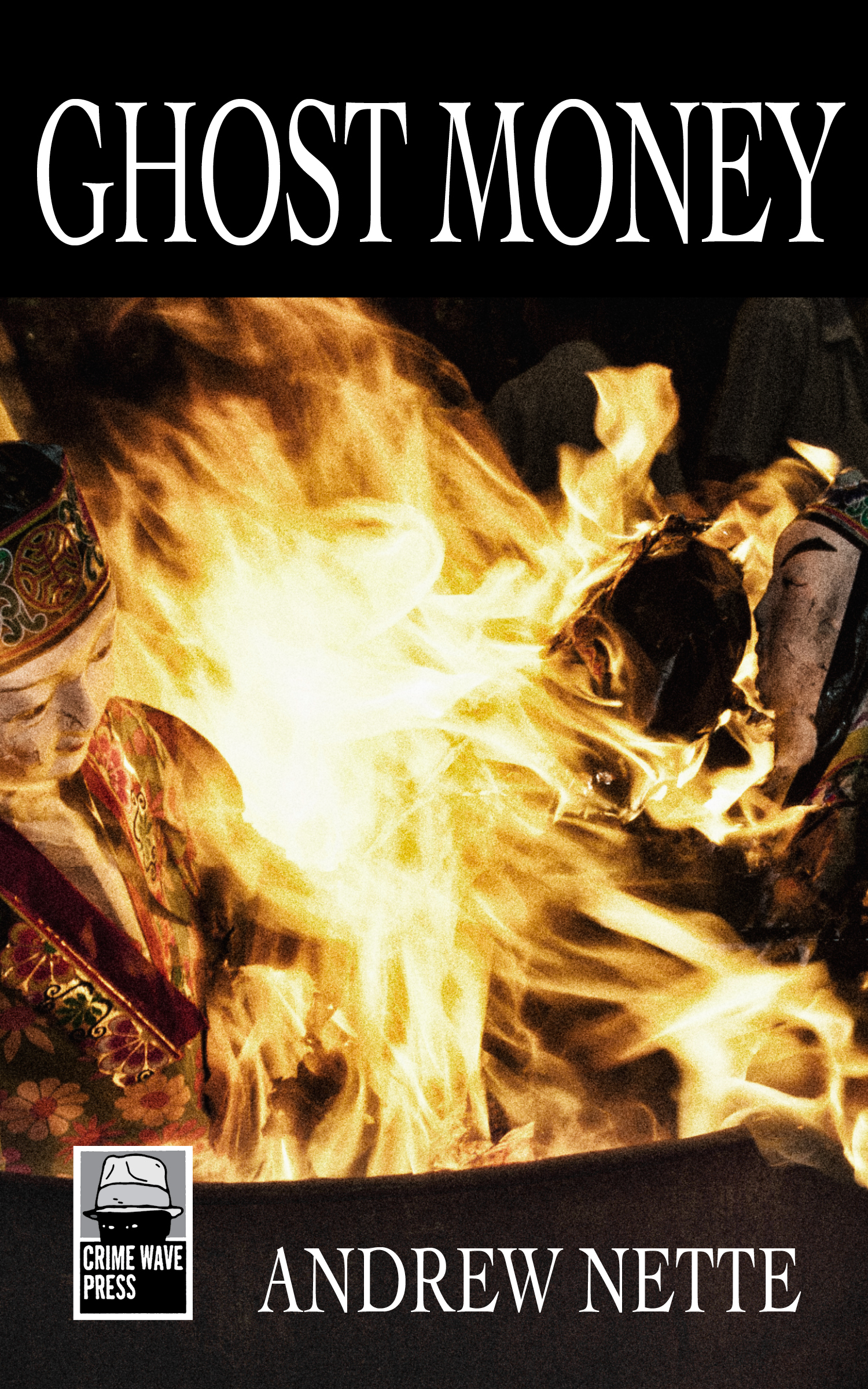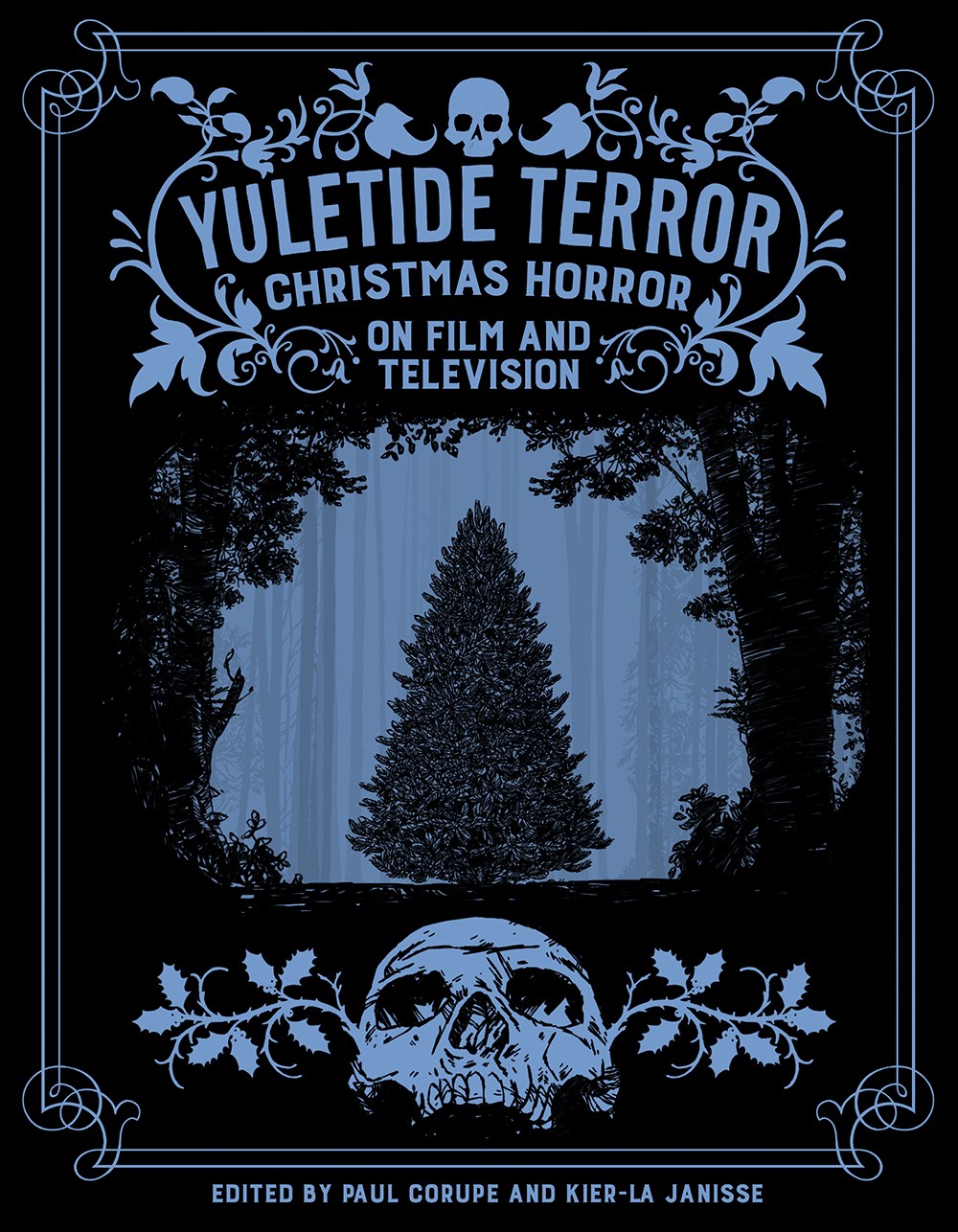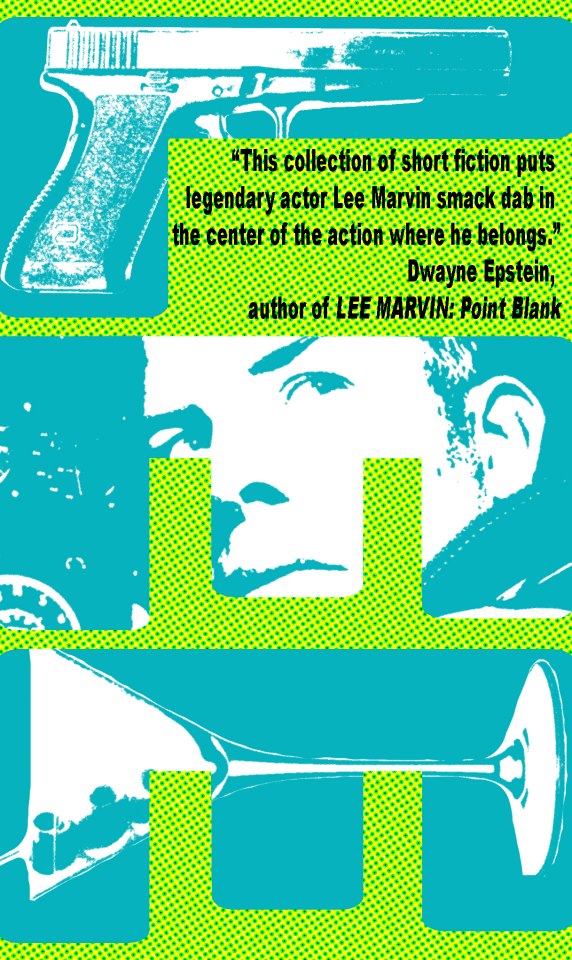 One of the things I like best about the Christmas/New Year period is it’s a good chance to catch up on my movie viewing. This holiday season I re-watched the neo-noir, Night Moves. Made in 1973, but not released until 1975, Night Moves belongs to a period of US film making that is probably my favourite. It’s a complex, meandering and multi-layered film that perfectly captures the moral and political ambiguity of the time. I wanted to review Night Moves for this site but discovered a recent post on the same topic that does it much better than I ever could by a friend called Dean Brandum.
One of the things I like best about the Christmas/New Year period is it’s a good chance to catch up on my movie viewing. This holiday season I re-watched the neo-noir, Night Moves. Made in 1973, but not released until 1975, Night Moves belongs to a period of US film making that is probably my favourite. It’s a complex, meandering and multi-layered film that perfectly captures the moral and political ambiguity of the time. I wanted to review Night Moves for this site but discovered a recent post on the same topic that does it much better than I ever could by a friend called Dean Brandum.
Dean’s the man behind a terrific web site called Technicolor Yawn (for overseas readers that’s Australian slang for throwing up), which chronicles the history of Melbourne’s now vanished grindhouse cinema scene in the seventies and early eighties. He’s a great guy and what he doesn’t know about cinema is not worth knowing. The following review appeared on his site in mid-December. Enjoy.
BTW, I’ll be interviewing Dean about Melbourne’s forgotten grindhouse cinema scene on Pulp Curry sometime in the next few weeks.
“I remember Bobby (Kennedy) when he got shot, the newsreels made it look like everything was happening under water” – Paula (Jennifer Warren) in Night Moves
It’s that certain visual aesthetic; let’s call it “muted Cannon with a chance of showers” that veneers so many Los Angeles set film noir of the early 1970s, differentiating it from the monochrome 40s-50s and the swimming pool enhanced glare of the 1960s. Yet most still maintained visual references to the classic period: the sandstone-terracotta offices, the tempting sleaze of Hollywood Boulevard, the Spanish-Colonial homes dotting the hills dappled by palm frond filtered sunlight.
There were a number of features that worked this side of the street with Chandler (1971), Hickey and Boggs (1972), The Long Goodbye (1973) and Hustle (1975) among a pretty impressive group. Busting (1974) ticks most of the boxes except for the visual aesthetic, instead patenting that iridescent Peter Hyams style more suited to outland-ish science fiction than gritty stories of the street. Then there was the likes of Chinatown (1975) which adheres to the classical style, to the point of being a veritable costume piece (like the fad of the early – mid 70s that saw numerous genres dip back into the 20s-30s for a fashion fetish) but one infused with the layered themes of corruption from the top and disillusionment from the bottom that was the calling card of many noirs of the day.
Then there is Night Moves (1975) which does indeed employ much of the look (although, with that distinct colour grading that I call ‘Warner Vivid’) but appears to go out of its way to eschew any referencing of the architectural tropes so common to L.A. set noirs of the past (or, then present). Instead, Arthur Penn’s film, for its scenes set in that city, prefers the near-modern – the commercial strip style so popular in the postwar years with budget conscious developers. No classical, no rennaisance, nothing highrise. Seldom has Los Angeles ever appeared so aesthetically drab on screen, with everybody an independent operator operating from the ground floor; the playing field is level in terms of status, finance and morality (the last of those characteristics has one notable exception when the protagonist is allowed, with viewer approval, to register his disgust at a culpable character).
Night Moves also employs a visual motif which we’ll explore here – that of water. For those unaware of the plot (and I despise writing and reading plot descriptions, so I’ll keep it brief) the film stars Gene Hackman as a private investigator who accepts the case of finding the missing teenage daughter (Melanie Griffith) of a faded (but well connected) former Hollywood starlet (Janet Clark). The case takes him to Florida at a time when his marriage is crumbling. Undergoing an identity crisis of his own, our PI (a former pro footballer renowned for his moves and now a chess enthusiast obsessed with staying ahead of the ‘game’) realises that his inability to read the ‘play’ within his human relationships is matched by a myopia regarding the machinations underlying the seemingly simple case he is in the process of solving. Harry’s existential crisis is evident in a tale he relates of once tracking down the father he never knew; yet although proud of his own detection efforts, he could follow through on then knowing the man. He could not follow through on knowing himself.
Thus Night Moves differs from other noir of the period in which the human factor is one of a moral compass struggling to point virtuously under the stress of a corrupt system, man. Here, Hackman’s morality is never questioned – although no saint he has a firm grasp on right and wrong and acts within their parameters – instead, it is the fundamental character flaws that cannot be overcome by periods of glory or achievement that stain the character and predetermine its fate. Such it is for our protagonist, such it is for the national psyche at the time (or, perhaps, any time). Intriguingly Night Moves was shot in 1973, as the Watergate scandal was unfolding. Yet for reasons unclear it sat on the shelf until mid-1975 which was, in terms of social context, more suitable. For this is the ideal Ford-administration feature film: by its end the unthinkable and unforeseen has occurred yet all along it was not only pre-ordained, it was downright obvious for those willing to see rather than look. The carnage over there is nowhere to go, nothing to gain, except continue to move without direction, making it at least as far as the looming bicentenary, with the hope of at least re-imagining the past, no matter how futile a gesture that may be. As Hackman tells Delly:
“I know it doesn’t make much sense when you are sixteen, but don’t worry, when you get to be forty it isn’t any better.”
But who is Hackman’s character? We first see him in the opening frames in long shot, pulling up in his car on a shabby Los Angeles street, one of low rent independent businesses doing the best they can. We can barely distinguish his features, but the words GENE HACKMAN indicate that he is the man getting out from the car and entering a building. There are other things to read too as we scan the street including the signage of his neighbours – there is a reality agent, a fur dealer, a vacuum cleaner salesroom and an upholsterer.
What follows is a jump cut directly to the interior of an office that Hackman enters through a glass paneled door. In conjunction with the credits that have begun to display and having already noted the business names of his street neighbours, our eyes are immediately taken to reading the words printed upon the door –
Perhaps it was my lack of cognitive ability, but in the millisecond between seeing the words on the door and the realisation that they were printed on the reverse side, I read the top word as “SOMEBODY”, then with the mental awareness having kicked in, I quickly deciphered the lower word.
“SOMEBODY CONFIDENTIAL”
…of course that is not what is written, but it would be an apt description not of the profession but of the man himself. “Somebody” is Moseby, Harry Moseby; a misshapen mass behind glass so rippled it resembles the disturbed surface of a body of water. What side of the water Harry is on is unclear at this stage, yet through the repetition of this motif in related but variated forms it becomes evident that for Harry interpersonal relationships, machinations and interactions are performed in another realm – one visible but distorted, one which he may observe but seldom participate in, one in which he is neither equipped to breathe nor function:
After discovering that his wife is having an affair with another man, Harry waits for Ellen to arrive home and he watches her pull into their driveway –
The unexplained window ornament magnifies, repeats and distorts the image of Ellen in her car, a visual motif repeated later, when Harry sneaks into her lover’s beach house and waits in his lounge, nibbling at the food and drinking the wine they enjoyed before adjourning to the bedroom. In the ensuing argument after they return, the lover decides to go outside to allow Harry and Ellen to talk, allowing Harry to glare at him through the door –
It should be noted that as a further humiliation for Harry, Ellen’s choice in male company runs from the platonic (a gay colleague) to this gentleman, a bohemian type who lives by the beach. Not only does this fellow require the use of a walking stick, he also attends to a pet cat in their company. If Night Moves had been made, say, thirty years earlier, such visual coding would have signified far more than a walking difficulty and a fondness for felines. One need only think back to the manner in which those affectations were used to provide the traits of impotency and sexual transgressiveness to James Mason’s twisted dominant male in The Seventh Veil (1945). And although it is clear that the rather benign chap Ellen is attracted to is no sexual sadist, he clearly offers something to her that harry cannot. Indeed he probes Harry about his past, his personality and his psyche, even goading him to throw a punch:
“C’mon take a swing at me Harry, the way Sam Spade would“.
But this is not 1941 and Harry is no Bogie.
When Harry and Ellen eventually have a heated and revealing face-off, some of Harry’s existential angst is only revealed after he smashes his drinking glass in the kitchen sink, obliterating it with the waste disposal. Yet while Harry will eventually go some way towards breaking through to Ellen, he still fails to see his professional line with any requisite clarity.
The seemingly simple case on which he is working soon reveals layers of intrigue and ulterior motives, yet as Harry attempts to solve the increasing riddles he remains oblivious to the answers presented to him. The Mexican antiquities that become catalysts for much of the action are admired by Harry early in the narrative – owned the Agency boss who gave him the job and thus sends him into the mess that is fated to unfold.
Is there a fatality to Night Moves? Perhaps there is, maybe all is pre-ordained and there is little that Harry can do to not only complete the case, but halt the body count that dramatically rises. There is a moment when Harry first calls on Arlene, the stepmother of Delly, the missing teenager he has been hired to locate and return. Their conversation begins with Arlene attempting to flirt with the reluctant Harry who plays along with professional distance. The good humoured banter winds down and there is a break in the dialogue. In those two seconds of near-silence one can hear a screeching car somewhere in the distance, to which Harry noticeably cocks his head. Arlene then immediately gets down to business and begins discussing Delly. Later, as Harry is driving, he plays an audio cassette provided by the detective agency that provides a detailed personal history of Arlene. At the moment that Delly is first mentioned, in the nighttime traffic once again screeching tyres are audible on the film’s soundtrack. Considering what will eventually occur to Delly, the forces of fatal destiny are at play. That Harry is unaware of their machinations is a moot point – he could not have altered its course anyway.
During the Florida sequences of Night Moves several sequences involve Harry being present on a glass-bottom boat viewing movements under the sea. Thus the Los Angeles subtext becomes the Florida text. A body in a submerged plane is discovered, its identity initially unknown and seemingly not to Harry’s concern. That by pure coincidence Harry should be present when, by chance, such a crucial clue is discovered in the murk – of all the murk in these vast Floridian waters – may be crossing a bridge too far for many viewers. Yet chance and co-incidence have been integral themes and contrivances in noir film since the classical period. Within the noir continuum those non-players are reduced to extras; little more than scenery. Spatial and temporal logistics mean little. Once drawn into the vortex of this case Harry was destined to be present when the body was found, for this is not the story of how that body got there or why the plane crashed. Instead this is Harry’s story and all within the narrative are located with precise consideration. The plane might as well have crashed in Harry’s (full) bathtub. Even then when presented with such information he would have been unable to decipher it.
And so Harry, in the film’s celebrated ending, lies battered and bruised in a boat on the sea. After several minutes of carnage almost all involved in the case are dead for reasons he has only just pieced together, the shock of such like a punch to the solar plexus and there he lies an emotional and physical wreck. Disbelieving that he could have been so short sighted, aware that his future holds little hope. Most of the dead now lie under the water, that hell of realisation, introspection, self-acknowledgement. He is unable to steer the boat, but it propels forward, continuing in circles as the credits roll.
“Did you know that sharks can never stop swimming because they don’t have any flotation sacs?” – Paula (Jennifer Warren)
“I didn’t know that” – Harry (Gene Hackman)
When Night Moves was released in Melbourne on the 12th of September, 1975 the nation was approaching its constitutional crisis. The parliament stood on a knife’s edge and within a month the Liberal party were blocking supply and a month later the elected government would be dismissed. Unemployment was high, inflation was worse and the hopes and dreams of ’72 were dashed with the stroke of the Governor General’s pen.
Night Moves lasted a solitary week at the Forum cinema in Melbourne and barely appeared afterwards, instead relegated to late night screenings and eventually video. Lost in our own introspection? We didn’t want to know. Failure? the hell with that, got enough of that happening in Canberra. And no, it had no fared much better in North America. Fucked over once it was not going to happen again. Going in circles? Yeah, we get it but we ain’t paying first run to see it.
Night Moves opened in the United States on 11th June, 1975. Nine days later Jaws would be unleashed wide and in its hype Harry Moseby would be soon forgotten. Spielberg’s film opened in Melbourne on November 28th, seventeen days after the dismissal of the Whitlam Goverment. it was time for ‘New Hollywood’ to forget the naval gazing, the flawed characters and the unresolved endings. There was Harry, poor old Gene bloody Hackman lost, bewildered and going in circles.
Under the water was a near mirror image. Yet it knew what it wanted and it took it. Farewell ‘New’ Hollywood, hello ‘New-New’ Hollywood.
Jaws opened at the Forum theatre, the Odeon and the Rapallo in Melbourne and would play for a total of 56 screening weeks.
Next week, New York crime writer Wallace Stroby will guest post on the five best crime films you’ve never seen.




















Pingback: Link Duties Unit vs. Hitler - Not Just Another TarsTarkas.NET Blog - Tars Tarkas.NET Blog
Great review of a complex and under-appreciated movie.
Thanks Deb, appreciate you dropping by and hope you are doing well.
Andrew
Thanks again, Andrew, for reprinting this and thanks too, Deborah, for the kind comment 🙂
Quite chuffed on both counts!
Dean
Pingback: Moseby Confidential: Arthur Penn’s Night Moves and the Rise of Neo-Noir | Pulp Curry